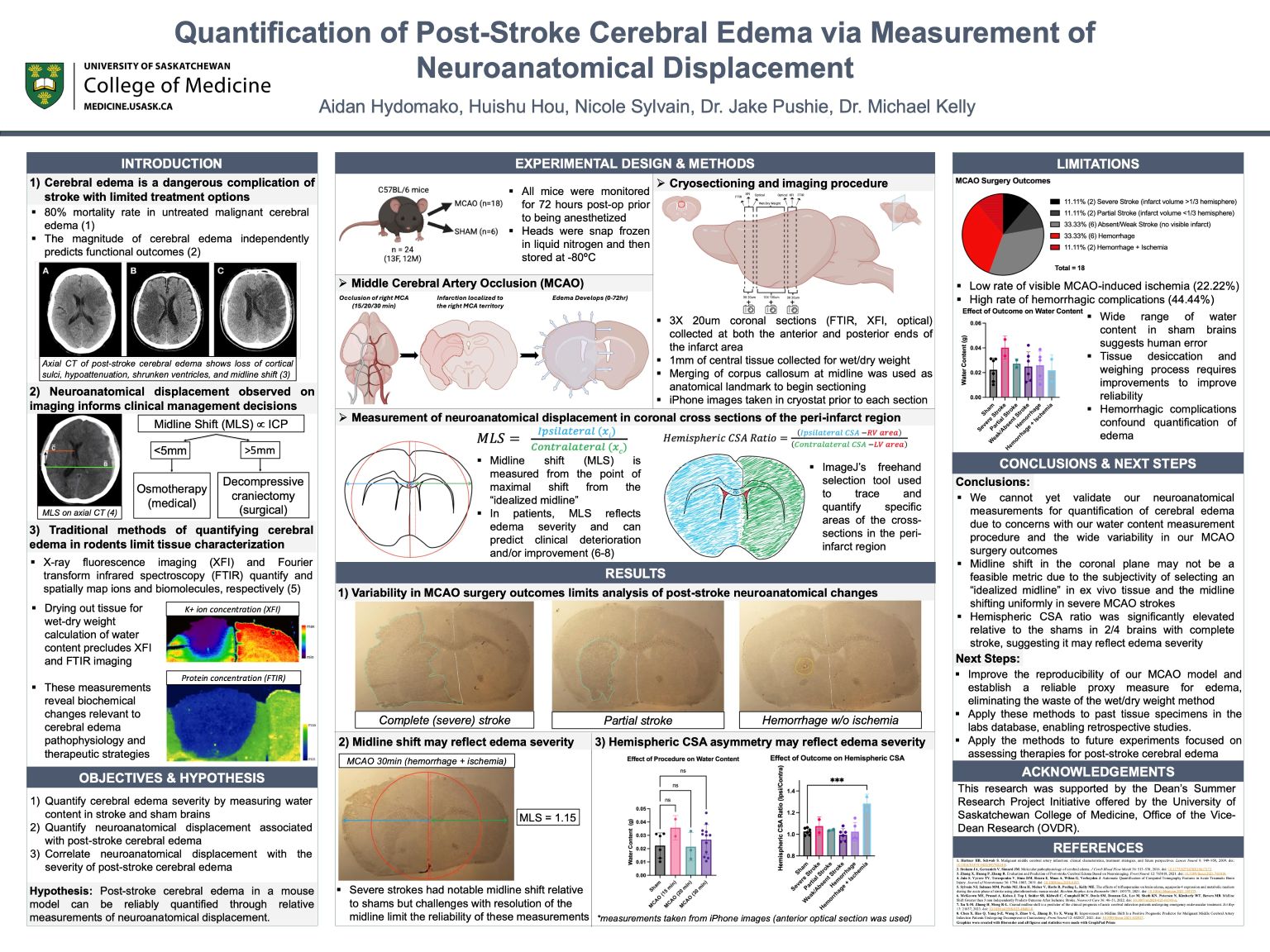
Quantification of Post-Stroke Cerebral Edema via Measurement of Neuroanatomical Displacement
Aidan Hydomako
Cerebral edema is a life-threatening complication of ischemic stroke, often leading to elevated intracranial pressure and poor neurological outcomes. Neuroanatomical measurements, such as midline shift, serve as clinical indicators of edema severity that guide management decisions. Treatments targeting the molecular mechanisms of cerebral edema following ischemic stroke are limited, underscoring the need for further preclinical research. In mouse models, edema is typically quantified by tissue desiccation to determine brain water content, which precludes additional analysis of the ischemic tissue using advanced imaging techniques. We hypothesized that post-stroke cerebral edema in a mouse model of ischemic stroke can be indirectly quantified through relative measurements of neuroanatomical displacement. We assessed hemispheric cross-sectional area (CSA) ratio and midline shift (MLS) in the coronal plane as candidate metrics for edema severity. Hemispheric CSA ratio appeared to be a more objective and promising measure than MLS in our middle cerebral artery occlusion (MCAO) model, although neither measurement significantly correlated with brain water content. Our analysis was limited by a low rate of MCAO-induced ischemic changes (22%) and a high rate of hemorrhagic complications (44%). Repeat MCAO experiments are required to further evaluate the utility of these measurements for quantifying post-stroke cerebral edema.on.
